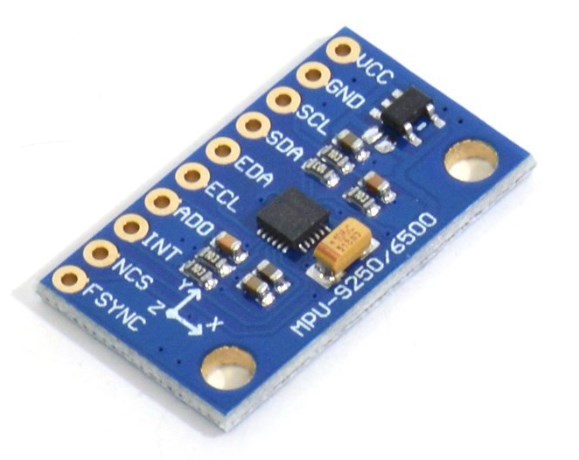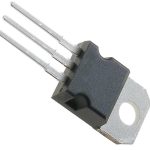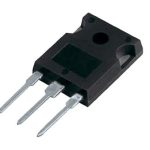The MPU9250 is a versatile sensor module that combines an accelerometer, gyroscope, and magnetometer into a single package, providing comprehensive motion sensing capabilities. Its compact size, low power consumption, and high accuracy make it a preferred choice for many developers and engineers.
In this article, we will take a deep dive into the MPU9250 sensor, examining its datasheet, pinout configuration, and comparing it with other similar sensors like the MPU6050 and BNO055. By the end of this article, you will have a clear understanding of the MPU9250’s features and how to utilize it effectively in your projects.
Importance of motion sensors in various applications
Motion sensors have become increasingly important in a wide range of applications, from consumer electronics to industrial automation. These sensors enable devices to detect and measure changes in physical position, acceleration, rotation, and magnetic fields. They play a critical role in robotics, gaming, augmented reality, and other motion-related technologies.
One popular motion sensor module is the MPU9250, developed by InvenSense, a leading manufacturer in the field of sensor solutions. The MPU9250 offers a comprehensive set of features, making it a go-to choice for many developers and engineers.
About the MPU9250 Sensor

The MPU9250 sensor module integrates three essential components: an accelerometer, a gyroscope, and a magnetometer. This combination allows it to accurately measure linear acceleration, angular velocity, and magnetic fields. By fusing data from these three sensors, the MPU9250 provides a more robust and accurate representation of motion in three-dimensional space.
Exploring the MPU9250 datasheet for detailed specifications
To gain a deeper understanding of the MPU9250, it is crucial to refer to its datasheet. The datasheet provides detailed specifications regarding the sensor’s measurement ranges, accuracy, resolution, sampling rates, and response times. It also outlines the operating conditions, supply voltage requirements, and temperature and humidity limitations. By carefully examining the datasheet, developers can choose appropriate settings and ensure optimal performance of the sensor in their specific applications.
Pinout and Connectivity Options of the MPU9250
The MPU9250 features a specific pinout configuration that determines its connectivity options. The module supports both I2C (Inter-Integrated Circuit) and SPI (Serial Peripheral Interface) communication interfaces, providing flexibility for different systems and microcontrollers. The pinout includes power supply and ground pins, reference voltage pins, communication interface pins, interrupt pins, and auxiliary function pins.
When designing a circuit with the MPU9250, it is important to follow the recommended wiring and connection guidelines provided in the datasheet. These guidelines may include the use of pull-up resistors, proper grounding techniques, and noise reduction measures. Adhering to these recommendations helps ensure reliable communication and accurate data acquisition from the MPU9250.
MPU9250 vs. MPU6050: A Comparative Analysis
Both sensors are manufactured by InvenSense and are widely used in various applications. One key difference is that the MPU9250 is an upgraded version of the MPU6050, offering additional features and improved performance.
The MPU9250 boasts higher accuracy compared to the MPU6050, thanks to its advanced sensor fusion algorithms and improved sensor technology. It provides more precise measurements of motion, orientation, and other parameters, making it suitable for applications that require high accuracy, such as robotics, navigation systems, and virtual reality.
In terms of stability, the MPU9250 demonstrates better performance due to its enhanced sensor calibration and compensation techniques. It effectively reduces drift and improves the sensor’s stability over time, ensuring reliable and consistent measurements. On the other hand, the MPU6050, while still providing decent stability, may require more frequent calibration to maintain accurate readings.
The MPU9250 generally consumes slightly more power than the MPU6050 due to its additional features and processing capabilities. However, the power difference is often negligible, and both sensors offer power-saving modes to optimize energy efficiency.
Which is better?
The choice between the MPU9250 and MPU6050 ultimately depends on the specific application requirements. The MPU9250’s higher accuracy and stability make it a preferred choice for applications that demand precise motion tracking, such as robotics, drones, and advanced motion capture systems. On the other hand, the MPU6050’s lower cost and relatively simpler design make it suitable for applications where cost-effectiveness and basic motion sensing capabilities are prioritized, such as gaming devices, basic motion detection, and simple orientation tracking.
MPU9250 vs. BNO055: Choosing the Right Sensor
Both sensors offer advanced motion sensing capabilities, but they have distinct differences that cater to different application needs.
In terms of features, the MPU9250 provides a wide range of motion sensing options, including accelerometer, gyroscope, and magnetometer, allowing for comprehensive motion tracking and orientation sensing. It also features sensor fusion algorithms that combine data from multiple sensors to provide accurate and reliable motion measurements.
On the other hand, the BNO055 sensor integrates an accelerometer, gyroscope, and magnetometer into a single chip, along with a built-in sensor fusion algorithm. This integration simplifies the integration process and provides calibrated sensor outputs, making it suitable for applications that require quick and easy implementation.
When evaluating their performance in different applications and environments, the MPU9250 shines in scenarios that demand high accuracy and precision. Its advanced sensor fusion algorithms and calibration techniques enable accurate motion tracking and orientation sensing in complex environments. It is commonly used in applications such as robotics, navigation systems, and virtual reality, where precise motion measurements are critical.
On the other hand, the BNO055 sensor excels in applications that require simplified integration and reliable performance in less demanding environments. It offers calibrated sensor outputs, reducing the need for complex calibration procedures. This makes it suitable for applications like augmented reality, gaming devices, and basic orientation tracking, where ease of use and quick implementation are essential.
Which to buy?
Ultimately, choosing the right sensor depends on the specific requirements of the application. If high accuracy, advanced motion tracking, and precise orientation sensing are paramount, the MPU9250 is the preferred choice. However, if simplicity, quick implementation, and reliable performance in less demanding environments are the main considerations, the BNO055 sensor offers a compelling solution.
Conclusion

MPU9250 sensor offers an impressive range of motion sensing capabilities, making it a valuable tool for a wide array of applications. Whether you are designing a drone, developing a gaming controller, or exploring virtual reality, the MPU9250’s accuracy, reliability, and compact form factor make it an excellent choice. Remember to refer to the datasheet for detailed specifications and recommendations to optimize the performance and integration of the MPU9250 sensor.



